Aloe plant, medicinal properties, indications and contraindications for use
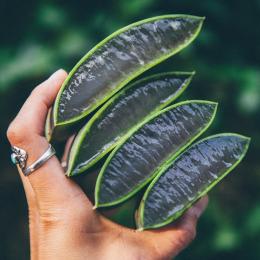
Aloe is a tree familiar from childhood with fleshy thick leaves on my grandmother’s windowsill. It was they who treated runny noses, dripped into ears, and applied to burns and calluses.
Agave leaves were shared with neighbors and recommended as first aid for sunburn and colds.
The aloe plant, whose medicinal properties are also recognized by traditional medicine, is the basis for the production of extracted dosage forms used in ophthalmology, neurology and gynecology.
Content:
- Description of the plant, how aloe vera differs from agave
- What beneficial substances are present in the leaves?
- Aloe plant, its medicinal properties, in what form it is used
- Collection and storage of leaves
- Recipes for using aloe to treat gastrointestinal diseases
- Aloe for neurological diseases
- Aloe recipes with honey to boost immunity and strengthen the body
- The use of aloe in folk medicine for the treatment of cardiovascular diseases
- Use in ophthalmology
- Aloe vera. Properties beneficial to the skin
- Contraindications to the use of aloe
Description of the plant, how aloe vera differs from agave
A thick trunk, fleshy leaves with prickly tips extending from it, arranged like branches on a tree - a description of my grandmother’s flower, which stood in all the apartments of our country for decades.
The popular name of this plant is agave; in scientific classification the term is used - aloe vera.
This species grows in greenhouse conditions and is not able to tolerate temperatures below 12 degrees.
Aloe vera has the same climate requirements. Unlike agave, the leaves of the plant emerge from a single point - the base of the plant. One of the names of this succulent is agave. Its leaves are much wider and thicker than the leaves of the agave.
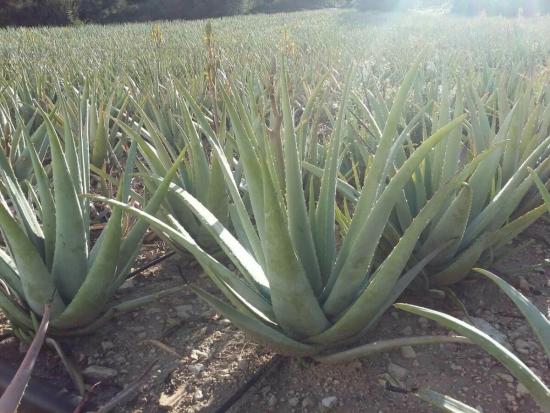
As for the beneficial properties, the chemical composition of both types is practically the same.
The juice and pulp of the leaves of both types are very bitter in taste; the name itself translates as “bitter”.
Experiments conducted by Italian scientists revealed an interesting detail about domestic and uncultivated aloe. According to the data obtained, the leaves of the domestic plant contain at least double the dose of nutrients compared to its uncultivated counterpart.
What beneficial substances are present in the leaves?
Succulents are adapted to life in changing climatic conditions: fertile rainfalls and subsequent droughts. The plant feels great even in the absence of water.
The reason for this is that it accumulates extracts of the most beneficial nutrients in its leaves, keeping them hydrated. To do this, the plant clogs the pores on the surface of the leaf during the dry period.
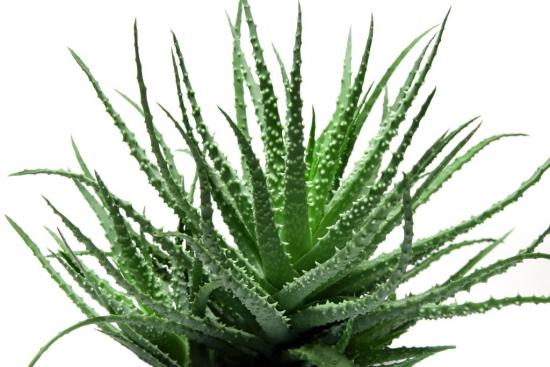
Inside the prickly leaf there are more than two hundred chemical elements and compounds.
Among them:
- vitamins, amino acids, polysaccharides, acids, minerals:
- vitamins of group B, A, C, E;
- calcium, potassium, copper, sodium, chromium, selenium, zinc, manganese;
- 12 anthraquinones - active compounds that have a laxative effect;
- alonine and emodin - fight viruses and bacteria;
- hormones that stop the development of inflammation and help the tissue repair process.
Extracts for treatment are isolated from the gel - the juicy pulp located under the thick skin of the leaf, and from the juice - a milky-yellowish liquid that collects under the top layer of the leaf.
In a young plant with a lifespan of less than 3 years, the content of vitamins and microelements is much less than in an adult.
Aloe plant, its medicinal properties, in what form it is used
Unique qualities of agave - the property of not only witchcraft. Medicinal succulents are used by official medicine as an auxiliary method of healing.
In pharmacies you can find pharmacological preparations, the basis of which is aloe vera. Extracted agave juice is available in different dosage forms: syrup, for injection, in alcohol solution, in the form of eye drops.
The juice from the leaves is used as first aid; chronic diseases are successfully treated with it.
Healing pulp is useful for:
- burns and other skin lesions. Accelerates healing, blocks inflammation, additionally nourishing the skin with a powerful vitamin complex;
- colds and inflammatory diseases. Supports immunity and blocks inflammatory processes;
- diseases of the gastrointestinal tract. Normalizes intestinal activity, heals ulcers on the walls of the mucous membranes;
- ophthalmological diseases. Moisturizes and promotes tissue regeneration;
- gynecological pathologies. Increases blood flow in internal organs;
- pulmonary diseases;
- neurological pathologies.
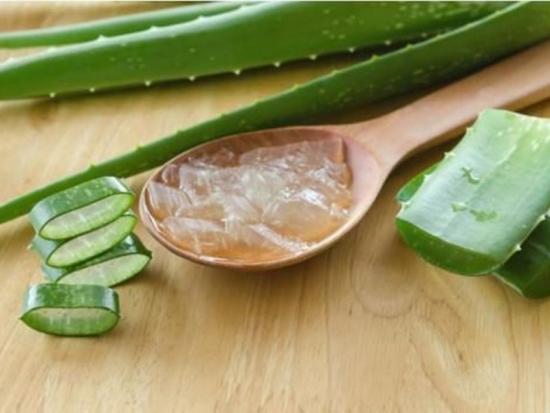
Aloe helps during the period of postoperative rehabilitation as a powerful immunostimulant, antibacterial, antimicrobial and anti-inflammatory drug.
The plant is used for preventive purposes, preventing seasonal colds, strengthening the functioning of the heart and other internal organs, and rejuvenating the entire body.
We invite you to watch a video about the aloe plant and its medicinal properties:
Collection and storage of leaves
A week before the planned collection, you need to stop watering the plant so that the concentration of active substances reaches a maximum. The peak saturation of nutrients occurs at the 5th year of life. A young bush is also capable of bringing benefits, but much less than its adult counterpart.
You can collect leaves from a 3-year-old plant. The lower and middle leaves of the agave are best suited for this purpose.
The leaves become the most juicy and filled with useful substances not immediately after collection, but after being in cold conditions for several hours. This process is called "biostimulation".
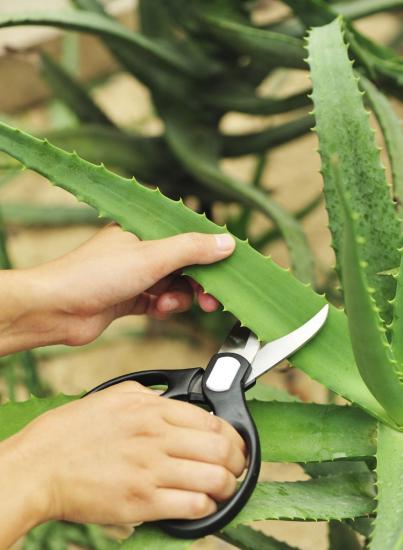
Basic conditions for preserving and increasing all beneficial properties:
- low temperature - not lower than +5 degrees;
- darkness to prevent vitamins from being destroyed by light;
- limit oxygen access to prevent oxidation.
The basis of all recipes using aloe is the initial preparation of the leaves. This is done correctly this way: with a twisting motion, remove the leaf from the trunk, wash, dry and wrap the leaf in cling film or paper, leaving the tip open. Then we place the paper with leaves in the refrigerator for 10-12 days. If the tip of the leaf is an open cut, you need to wrap it with cling film.
Shelf life in the refrigerator is one month.
Recipes for using aloe to treat gastrointestinal diseases
The juice of the plant is capable of triggering regeneration processes in the human body.When exposed to juice, wounds actively scar and ulcers heal. This property of the plant is used by healers to eliminate gastrointestinal pathologies. It is worth remembering that here, as in any treatment, the main thing is regularity of use.
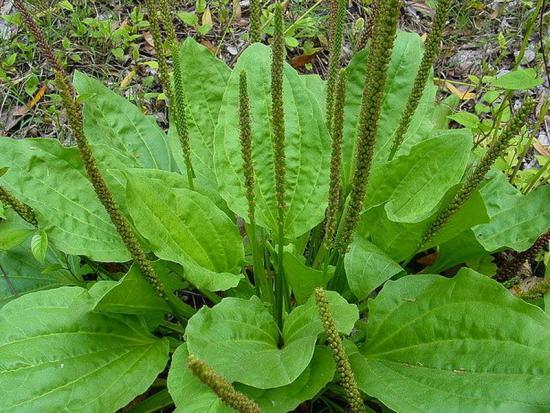
To neutralize the inflammatory process and normalize the acidity of gastric juice:
- 3 plantain leaves + 3 raspberry leaves + 1 liter of water
- The mixture, poured with boiling water, is infused for half an hour. Then it adds:
- pulp of aloe leaf + 5 tablespoons of honey.
- Drink 12 glasses before meals for a month.
Raw potato juice also reduces acidity and will be a useful ingredient in a recipe for the prevention or treatment of gastritis:
- 5 ml each of juice and potato juice + 1 teaspoon of honey.
- Drink 1 tablespoon on an empty stomach once a day.
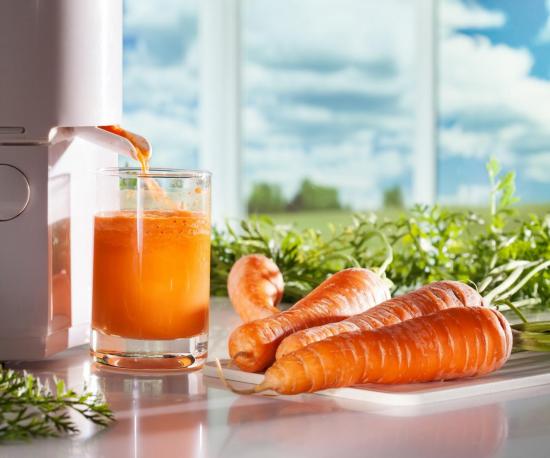
A similar recipe with an antibacterial and healing effect for the treatment of atrophic gastritis, where potatoes are replaced with carrot juice:
- 2 tablespoons of aloe and carrot juices + 2 tablespoons of honey.
- Everything is mixed and taken half an hour before meals, 2 tablespoons.
Aloe for neurological diseases
Pathologies of the peripheral nervous system associated with damage to the sensory organs are treated using the juice of medicinal succulents. Subcutaneous injections of aloe vera are used for treatment. The administered drug is purchased at the pharmacy.
It strengthens the nervous system and improves brain functioning.
Neurological sleep disorders can also be treated with folk recipes using agave. The basis of such infusions and decoctions for insomnia are herbs with a pronounced sedative effect, while the plant acts as a means of improving blood circulation and softening the manifestations of nervous itching.
A glass of warm water with a spoonful of honey and grated leaf pulp infused in it can calm the nerves and have a positive effect on the functioning of the brain, stomach and intestines.
Aloe recipes with honey to boost immunity and strengthen the body
It can be confidently recommended as a powerful immunostimulant. Enhanced by the preventive and healing properties of honey, aloe can heal the body, strengthen it during seasonal colds, and help recovery during the rehabilitation period after an illness or surgery.
The recipe for aloe with honey, familiar to all generations, is simple and effective: grind a tablespoon of honey with a tablespoon of gel and dissolve the resulting pulp in warm water.
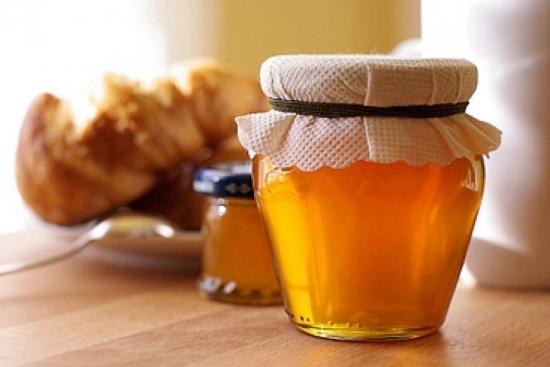
Name juice can be added to any recipe that stimulates the immune system. In this case, only one rule must be observed: the pulp or juice is almost never subjected to heat treatment and is added to the finished warm or cooled medicinal elixir.
Powerful immune support - nut recipe:
- Aloe gel + honey + lemon juice + grated nuts.
- All parts are mixed and infused in a cool, dark place for 2 weeks.
- Take a teaspoon of the miracle mixture before each meal.
Recipe for normalizing stomach function, stimulating the immune system and increasing appetite:
- Dilute biostimulated agave juice from 4 large leaves with drinking water in a proportion of 1 part juice to 3 parts water,
- Squeeze half a lemon into the solution.
- You need to drink this mixture an hour before meals, one tablespoon at a time.
The use of aloe in folk medicine for the treatment of cardiovascular diseases
The plant is used in folk medicine to treat diseases of the cardiovascular system as a component of infusions and decoctions.
The role of the succulent in these recipes is to improve the functioning of the circulatory system and tissue regeneration. Aloe is especially effective in the treatment of angina pectoris.
Infusion to normalize heart rate:
- Pour two tablespoons of dried lemon balm, yarrow and valerian herbs into 2 cups of boiling water.
- Add 4 tablespoons of chopped leaves.
- Leave for 2 hours, then strain.
- Drink half a glass once a day in small sips.
Infusion for the treatment of cardiovascular and kidney diseases:
- Dry medicinal plants - 4 tablespoons each of knotweed and oregano, 3 tablespoons of chamomile flowers, pour a liter of boiling water,
- Add 8 tablespoons of pureed aloe and leave for 12 hours.
- Drink half a glass of the strained infusion an hour after each meal.
Infusion to increase immunity and relieve angina pain:
- A tablespoon of strawberry leaves + 2 tablespoons of hawthorn + 1 teaspoon of sugar or honey is infused in a thermos for a day.
- The next day, 1 tablespoon of aloe juice is added to the strained infusion.
- The course of treatment is a week. You need to drink a glass of warmed infusion at night.
Alcohol tincture for relieving pain due to angina pectoris:
- Pour a couple of heads of grated garlic with 3 tablespoons of vodka, leave for 10 days, strain.
- Add a tablespoon of honey and 2 tablespoons of juice from the leaves to the tincture.
- Drink half a teaspoon once a day.
Even more healthy recipes with aloe are on video:
Use in ophthalmology
The use of medicinal succulents in the treatment of eye diseases is due to the many beneficial properties of the plant:
- anti-inflammatory, antibacterial and antimicrobial effect for the treatment of conjunctivitis, blepharitis and barley;
- moisturizing - for dry eyes;
- acceleration of regeneration - cataracts, glaucoma;
- Agave and agave eliminate swelling and eye fatigue.
To treat ophthalmic problems, you can purchase a ready-made product containing aloe at the pharmacy, or you can make eye drops yourself.
If agave grows in your home, then making very effective and fresh drops will not be at all difficult.
Homemade eye drops are a mixture of one teaspoon of honey with 5 ml of juice, diluted with 50 ml of boiled water. You can instill these drops several times a day.
A home remedy in the form of juice dissolved in a 1:10 ratio with water is effective in the treatment of blepharitis and stye. The solution can be instilled or applied as a lotion.
Washing the eyes five times with a juice solution is prescribed for glaucoma. Applying cotton pads soaked in solution to the eyes for half an hour will relieve conjunctivitis.
Aloe vera. Properties beneficial to the skin
Moisturizing and regeneration - these qualities of aloe are widely used in cosmetology. The gel located inside the fleshy leaf of the plant is a ready-made cosmetic product.
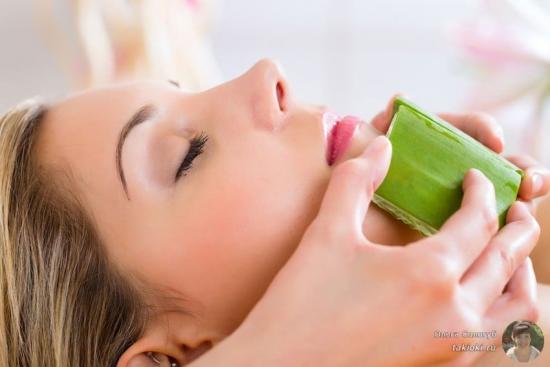
To improve the condition of the skin, you don’t need to prepare any special lotions, oils or creams - just regularly wipe your face and body with a fresh cut of the leaf. This procedure softens rough tissue of the elbows and legs, moisturizes and rejuvenates the delicate skin of the décolleté, tightens and tones the face.
If you are sunburned, have a scratch or abrasion, aloe will help again. Applying the gel to the affected surfaces will pleasantly cool and soothe the pain, have an antimicrobial effect and start an active healing process.
Juice will replace lotion; it can be added to creams, tonics, and masks.Elixirs from agave work as a vehicle that binds and delivers nutrients to the subcutaneous layers. Always store the juice and gel of succulents in a cool place with minimal lighting, in glass or ceramic containers.
Juice recipe for cosmetic purposes
Crush the biostimulated leaves (which have undergone long-term cold treatment) and add drinking water in the amount of one part leaves to 3 parts water.
Leave the mixture for two hours and filter. Store the juice in the refrigerator and use as desired to remove makeup, tone the skin, and refresh the face.
Aloe Vera Cosmetic Oil Recipe
Mix one part of the gel with 9 parts of any oil that you use for cosmetic purposes: coconut, olive, flaxseed, wheat germ oil.
Place the mixture in a cool, dark place for 2 weeks and let it brew, shaking the jar occasionally.
Before use, the oil must be filtered and a few drops of a preservative, vitamin E, added.
Aloe oil can literally restore normal water balance in just a few uses, eliminate dry hair and rejuvenate the area around the eyes.
Contraindications to the use of aloe
Active qualities very effectively improve blood circulation, accelerate regeneration and metabolism processes. These properties are successfully used in medicine to treat many diseases. However, these same qualities can worsen the condition of some diseases.
Diseases for which aloe is contraindicated are pathologies associated with bleeding, growing tumors and other conditions:
- pregnancy;
- children under 3 years of age;
- the presence of internal hemorrhages;
- internal use in oncology;
- cardiac dysfunction and renal failure;
- with heavy menstruation;
- high blood pressure;
- intestinal obstruction;
- Iron-deficiency anemia;
- gastrointestinal diseases during the acute period.
If you want to carry out a course of treatment or prevention with aloe, be sure to make sure that your illness is not on the list of contraindications.
It is advisable not just to use information from books and the Internet, but to get a recommendation from your therapist.

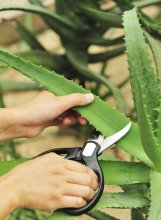

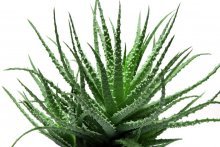

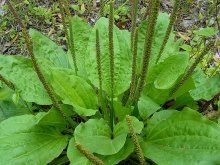

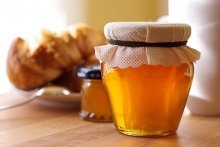

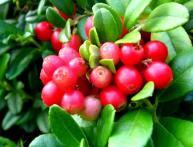
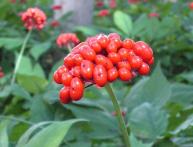
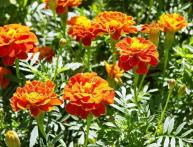
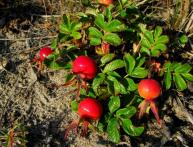
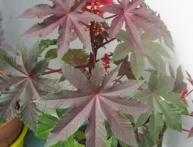
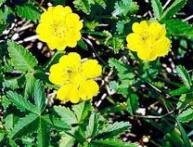

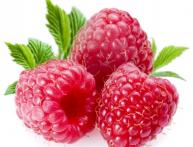
Comments
My finger was sore from being pricked by a fish fin. Four days! I was terribly sick. Until I was advised to apply aloe. Passed right away!
We have aloe growing on our windowsill, but we use it only occasionally to treat various skin diseases. I didn’t know that aloe could boost immunity and treat heart pathologies.
I use aloe juice for exacerbation of gastritis of the stomach. It helps a lot, no worse than pills.
Aloe helps well with inflamed acne; to do this, you need to tape aloe to the affected area, or stick it with a band-aid for several hours; when you remove it, you will see that everything is gone.
I have two types of aloe at home; I have loved this plant since childhood! It’s not for nothing that our parents always used it to treat runny noses! And I use it everywhere, for the skin, for the intestines, and for the immune system))
Since I was a teenager, following my grandmother’s instructions, I have been smearing my skin with fresh aloe juice straight from a fresh cut. Granny won't give you bad advice. I wonder if the recipes for supporting the immune system are very tasteless?) Is it really possible to force children to use it? And can they do this?
I use aloe mainly externally. For burns and cuts, as well as in the form of masks - an effective and at the same time, free option.I don’t dare take it internally, as there are contraindications.
I always have aloe growing on my windowsill, I use it for face and hand masks, I use nose drops for rhinitis, if there are inflammatory processes on the face, then aloe copes well with this problem. But I didn’t know that it could be taken orally. I'll definitely try it!